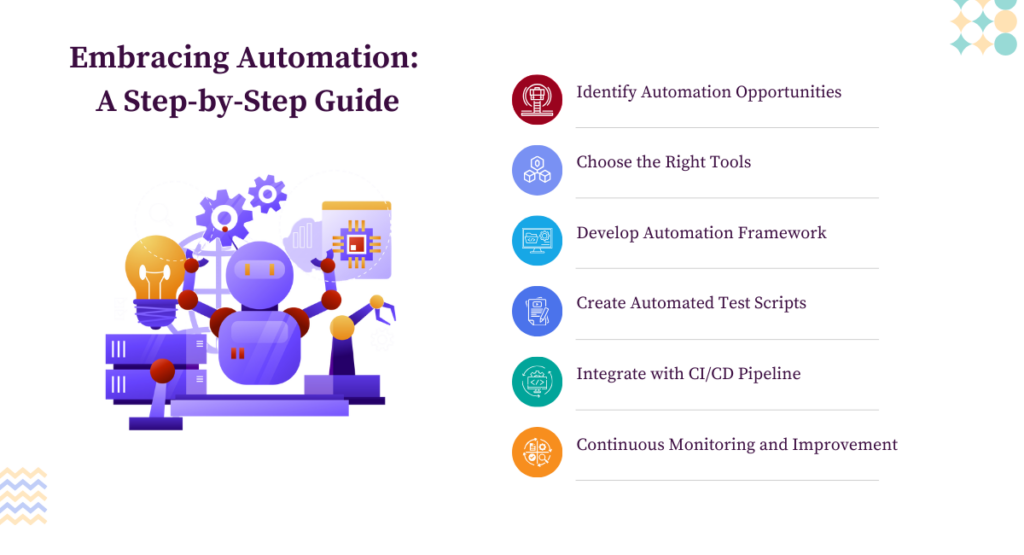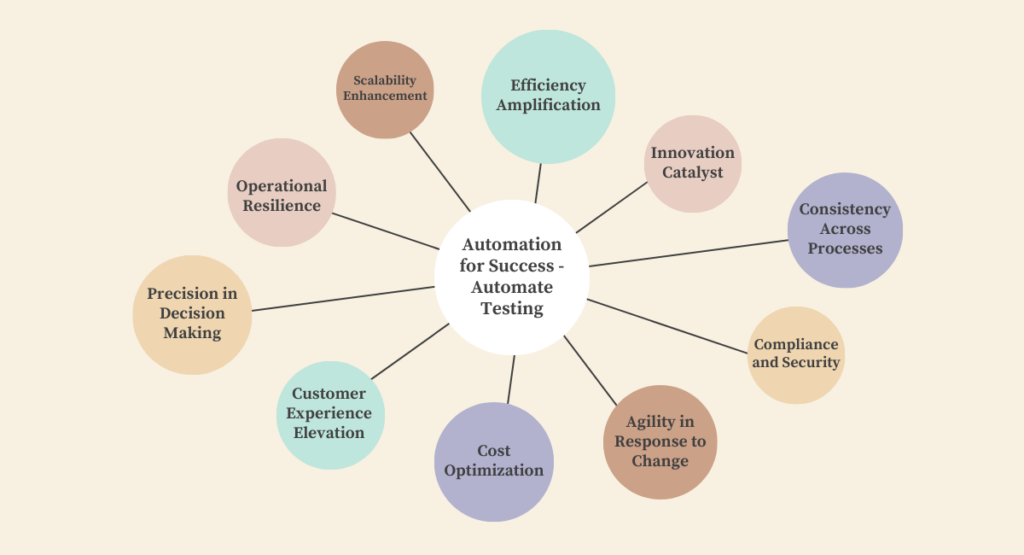Traditional manual testing methods, while valuable, are often time-consuming and prone to human error. By leveraging automate testing, businesses can achieve faster test execution, increased test coverage, and improved accuracy in identifying defects.
This is where test automation steps is revolutionizing the way organizations approach software testing and quality assurance. Test automation also facilitates the reuse of test scripts, ensuring consistency across multiple test cycles.
Moreover, it enables organizations to conduct comprehensive regression testing efficiently, thereby accelerating the software development life cycle.
The adoption of test automation aligns with modern agile and DevOps practices, promoting faster delivery of high-quality software products.
The Imperative of Test Automation
Test automation involves using software tools to execute test cases automatically, freeing up testers to focus on more strategic tasks like exploratory Automate testing and defect analysis.
Automation not only enhances Automate testing efficiency but also improves overall software quality.
According to a recent study, the size of the global automation testing market was approximated at USD 25.43 billion. Forecasts indicate a robust compound annual growth rate (CAGR) of 17.3% from 2023 to 2030.
The market's expansion is fueled by businesses' increasing inclination towards adopting sophisticated automation testing methods, including the integration of DevOps and Agile methodologies.
This trend signifies a proactive approach in leveraging advanced Automate testing techniques to enhance overall Automate testingefficiency and effectiveness.
Embracing Automation: A Step-by-Step Guide

To successfully implement test automation, organizations should follow a structured approach:
- Identify Automation Opportunities: Begin by analyzing your Automate testing processes to identify areas where automation can provide the most significant benefits. Focus on repetitive, high-volume test cases that are prone to human error.
- Choose the Right Tools: Select automation tools that align with your Automate testing needs and technical expertise. Consider factors like tool compatibility, ease of use, and integration with existing systems.
- Develop Automation Framework: Establish a robust automation framework to manage test scripts, data, and execution. This framework should ensure consistency, maintainability, and scalability.
- Create Automated Test Scripts: Design and develop test scripts using the chosen automation tools. Ensure test scripts are well-documented, modular, and reusable.
- Integrate with CI/CD Pipeline: Integrate your automated tests into your CI/CD pipeline to automate testing throughout the software development lifecycle.
- Continuous Monitoring and Improvement: Regularly monitor the performance of your automated tests and make adjustments as needed. Continuously refine your automation framework and test scripts to ensure effectiveness.
Automation for Success - Automate Testing

- Efficiency Amplification:
- Automation streamlines repetitive tasks, reducing manual effort and minimizing the likelihood of errors.
- Routine processes are executed swiftly, allowing teams to focus on strategic initiatives and creative endeavors.
- Scalability Enhancement:
- Automated systems can effortlessly scale to meet growing demands without a proportional increase in human intervention.
- This scalability ensures that operations remain efficient and responsive as the organization expands.
- Innovation Catalyst:
- Automation liberates time and resources, fostering a conducive environment for innovation and creative problem-solving.
- Teams can dedicate more energy to exploring novel ideas and implementing forward-thinking strategies.
- Operational Resilience:
- Automated workflows enhance operational resilience by minimizing disruptions and reducing dependency on manual processes.
- Businesses become more adaptable, capable of navigating unforeseen challenges with agility.
- Precision in Decision Making:
- Automation contributes to data-driven decision-making processes, providing accurate and real-time insights.
- Decision-makers can rely on precise information, leading to more informed and effective strategic choices.
- Consistency Across Processes:
- Automated systems ensure consistent execution of processes, mitigating the variability introduced by human factors.
- Standardized workflows contribute to the reliability and predictability of outcomes.
- Customer Experience Elevation:
- Automation enables personalized and seamless customer interactions by automating customer-facing processes.
- Enhanced customer experiences contribute to brand loyalty and positive market perception.
- Cost Optimization:
- Automation reduces operational costs by minimizing the need for extensive manual labor and decreasing error-related expenses.
- Organizations can allocate resources more efficiently, optimizing overall cost structures.
- Agility in Response to Change:
- Automated processes enhance organizational agility, enabling rapid responses to market changes and emerging opportunities.
- The ability to adapt swiftly becomes a competitive advantage in dynamic business environments.
- Integration with Emerging Technologies:
- Automation serves as a gateway to integrating emerging technologies such as artificial intelligence, machine learning, and the Internet of Things.
- This integration opens avenues for advanced capabilities and future-proofing business operations.
- Compliance and Security:
- Automated systems can enforce consistent compliance with regulations and security protocols.
- This ensures that organizations meet industry standards and safeguard sensitive data effectively.
- Continuous Improvement:
- Automation facilitates continuous improvement by providing data-driven insights into operational efficiency.
- Organizations can iteratively enhance processes, fostering a culture of ongoing optimization.
Book a Demo and experience ContextQA testing tool in action with a complimentary, no-obligation session tailored to your business needs.
Test automation is an essential tool for organizations seeking to enhance software quality, streamline workflows, and achieve faster time-to-market.
By adopting a strategic approach to test automation, organizations can reap the benefits of improved efficiency, reduced costs, and accelerated innovation.
You may also be interested in: API Development and Testing Tools | Top 10
